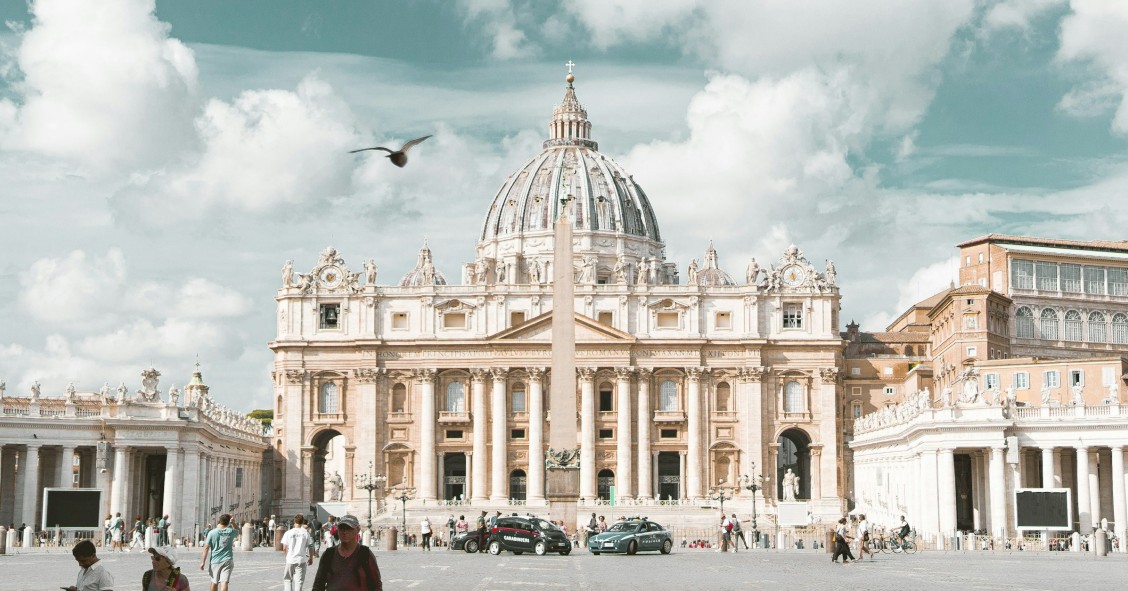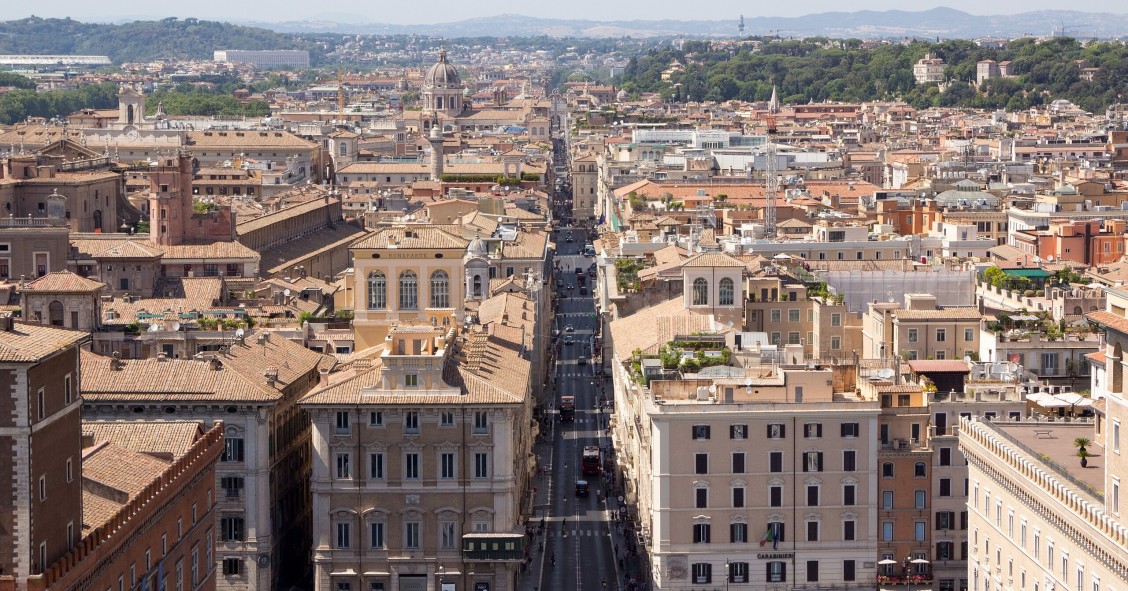
With the death of Pope Francis, the world turns its eyes once again to the Vatican: the conclave is about to begin. But how exactly is a new Pope chosen? It is one of the most mysterious moments in the Catholic Church – and indeed in the Western world.
What really happens behind the closed doors of a conclave? Who is allowed to take part? How does the voting process work? And what do all the associated rituals mean? When will we see the white smoke rise from the chimney of the Sistine Chapel?
Funeral of Pope Francis (1936–2025): the Pope who changed the world

Pope Francis has died at the age of 88, after a papacy marked by simplicity, compassion, and a deep commitment to the most vulnerable. True to his values, he planned a funeral that breaks with tradition.
His body will lie in state in St Peter’s Basilica, placed in a simple wooden coffin lined with zinc, resting on the floor of the Basilica rather than in an elevated casket. In contrast to his predecessors, he will not pass through the Apostolic Palace, nor will he be buried in the crypt of St Peter’s.
Honouring his final wish, Pope Francis will be laid to rest in the Basilica of Saint Mary Major in Rome – a heartfelt tribute to his profound devotion to the Virgin Mary. After the funeral, the Church will begin the Novendiales, a traditional nine-day period of mourning with daily Masses and prayers for his soul.
The world now says goodbye to a Pope who left a lasting mark on history – “for everyone, everyone, everyone!” – remembered for his humility, his warmth, and his tireless pursuit of reform and mercy.
What is the conclave, and how did it begin?

The conclave is the process by which a new Pope is elected, carried out exclusively by cardinal electors gathered behind closed doors in the Sistine Chapel. The term comes from the Latin cum clave (“with a key”), referring to the complete seclusion of the participants during the voting. This tradition dates back to the 13th century and was introduced to prevent prolonged periods without leadership in the Catholic Church.
Who is allowed to vote in the conclave?

Only cardinals under the age of 80 at the time of the Pope’s death are eligible to vote. Known as “cardinal electors”, they are entrusted with the responsibility of choosing the new Supreme Pontiff during the conclave.
At present, there are 138 cardinal electors out of a total of 252 cardinals — the remaining 114 have passed the age limit and therefore do not have voting rights. However, the conclave does not begin immediately.
According to the Apostolic Constitution Universi Dominici Gregis, issued by John Paul II in 1996, the conclave may only commence after a minimum of fifteen full days following the Pope’s death. This period allows time for all the cardinals to travel to Rome and for the necessary preparations to be made for the election of the new Pontiff.
How does the conclave work: what happens inside the Sistine Chapel?
The conclave takes place in the Sistine Chapel, one of the Vatican’s most sacred spaces. After the Missa Pro Eligendo Papa, the cardinals take an oath of absolute secrecy and enter total seclusion: no mobile phones, no external contact, and strict surveillance. For days, only speaking, praying, and voting take place – until a new Pope is chosen.
This isolation is designed to ensure freedom of thought and the calm required for each cardinal to vote according to his conscience, free from outside influence.
How is the new Pope elected?

During the conclave, the cardinals cast their votes in secret, following a highly ritualised process. Each cardinal privately writes the name of their chosen candidate on a ballot paper, along with the Latin phrase Eligo in Summum Pontificem (“I elect as Supreme Pontiff”).
Election of the new Pope: how the votes are counted
The counting of votes in the election of a new Pope follows a detailed and complex procedure to ensure maximum transparency and integrity. Here are the main steps:
- First, three scrutineers are drawn by lot. They are responsible for collecting and counting the votes.
- Then, three revisers are selected to verify the accuracy of the scrutineers’ count.
- Finally, three assistant cardinals are appointed to collect the votes of any sick cardinals who are unable to approach the ballot box.
Once all votes have been cast, one of the scrutineers shakes the urn, and another counts the ballot papers to confirm the total matches the number of voters.
If all is in order, the scrutineers take their seats near the altar and begin the count:
- The first scrutineer opens each ballot and checks the name.
- The second confirms the name and passes it to the third.
- The third reads the name aloud, and all cardinals record it on a special sheet.
Each vote is placed individually into the urn on the altar of the Sistine Chapel and counted with the utmost care. If no candidate receives a two-thirds majority, the ballot papers are burned, and the process begins again.
How long can a conclave last?

The conclave can last just a few hours or stretch over several days — it all depends on how quickly the cardinals reach a consensus. On average, a papal election takes between two and five days, but history records conclaves that have lasted for months.
If, after several rounds of voting, no candidate secures the required majority, the two cardinals who received the most votes become the only eligible candidates. If this stage isn't reached early on, the process continues according to very specific rules:
- During the first three days, up to four votes take place each day — two in the morning and two in the afternoon.
- If there is no result after three days, the proceedings pause for a day of prayer and reflection.
- This cycle repeats: after every block of seven unsuccessful ballots, there is another pause for meditation before voting resumes.
If, even after numerous rounds, the required two-thirds majority is not achieved, the conclave enters a decisive phase: the two most-voted candidates from the latest ballot become the only eligible contenders, and the cardinals must continue voting until one receives the qualified majority.
When will we see white smoke over the Vatican?
Only once a new Pope has been elected is the world informed — signalled by the famous white smoke rising from the chimney of the Sistine Chapel.
This visual signal is produced by burning the ballots along with specific chemical compounds (potassium chlorate, lactose, and resin). If black smoke appears, it means no decision has yet been made.
Who are the frontrunners to succeed Pope Francis?

With the death of Pope Francis, speculation has already begun about who might succeed him. Below are some of the cardinals widely regarded as frontrunners:
- José Tolentino de Mendonça (Portugal): A progressive poet and theologian born in Madeira. Many see him as a strong candidate for the papacy. Last year, he presided over the Our Lady of Fátima pilgrimage in Wiltz.
- Pietro Parolin (Italy): Vatican Secretary of State. An experienced diplomat and influential figure within the Curia.
- Matteo Zuppi (Italy): Archbishop of Bologna. A progressive voice, close to Francis, known for his work in social causes and interfaith dialogue.
- Pierbattista Pizzaballa (Italy): Latin Patriarch of Jerusalem. A strong advocate of interreligious dialogue and the Palestinian cause.
- Jean-Marc Aveline (France): Archbishop of Marseille. Focused on immigration and building bridges between faiths.
- Péter Erdő (Hungary): Archbishop of Esztergom-Budapest. A conservative with a strong role in the new evangelisation and Orthodox dialogue.
- Mario Grech (Malta): Secretary General of the Synod of Bishops. Known for his commitment to listening and social justice.
- Luis Antonio Tagle (Philippines): Former Archbishop of Manila. A champion of social justice and interfaith cooperation.
- Robert Francis Prevost (USA): Prefect of the Dicastery for Bishops. Made cardinal by Pope Francis in 2023.
- Wilton Gregory (USA): Archbishop of Washington. The first African-American cardinal, actively involved in the fight for social justice.
- Blase Cupich (USA): Archbishop of Chicago. A progressive focused on inclusion and supporting marginalised communities.
- Fridolin Ambongo Besungu (Democratic Republic of Congo): Archbishop of Kinshasa. A strong voice for peace and justice in the Congo.
- Leonardo Ulrich Steiner (Brazil): The first cardinal from the Amazon region. A defender of the Amazon’s people and environment.
- Sérgio da Rocha (Brazil): Archbishop of Salvador. A moral theologian with a strong pastoral presence in Brazil.
The Catholic Church now prepares for a new chapter. The conclave is more than a decision — it is a centuries-old tradition that shapes the spiritual future of millions.
All that remains is to wait for the white smoke and the eagerly awaited announcement: Habemus Papam!




